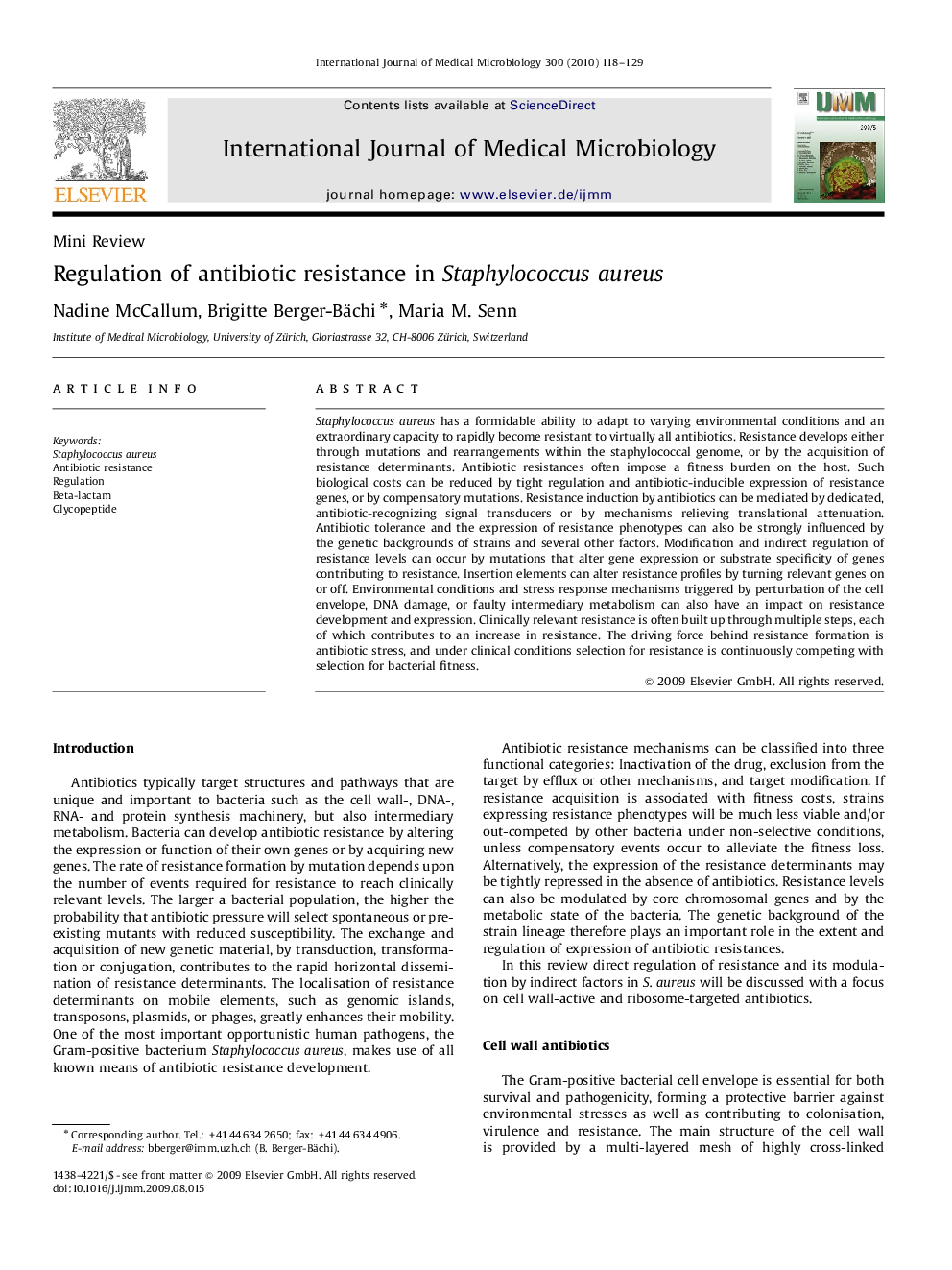| Article ID | Journal | Published Year | Pages | File Type |
|---|---|---|---|---|
| 8386176 | International Journal of Medical Microbiology | 2010 | 12 Pages |
Abstract
Staphylococcus aureus has a formidable ability to adapt to varying environmental conditions and an extraordinary capacity to rapidly become resistant to virtually all antibiotics. Resistance develops either through mutations and rearrangements within the staphylococcal genome, or by the acquisition of resistance determinants. Antibiotic resistances often impose a fitness burden on the host. Such biological costs can be reduced by tight regulation and antibiotic-inducible expression of resistance genes, or by compensatory mutations. Resistance induction by antibiotics can be mediated by dedicated, antibiotic-recognizing signal transducers or by mechanisms relieving translational attenuation. Antibiotic tolerance and the expression of resistance phenotypes can also be strongly influenced by the genetic backgrounds of strains and several other factors. Modification and indirect regulation of resistance levels can occur by mutations that alter gene expression or substrate specificity of genes contributing to resistance. Insertion elements can alter resistance profiles by turning relevant genes on or off. Environmental conditions and stress response mechanisms triggered by perturbation of the cell envelope, DNA damage, or faulty intermediary metabolism can also have an impact on resistance development and expression. Clinically relevant resistance is often built up through multiple steps, each of which contributes to an increase in resistance. The driving force behind resistance formation is antibiotic stress, and under clinical conditions selection for resistance is continuously competing with selection for bacterial fitness.
Related Topics
Life Sciences
Biochemistry, Genetics and Molecular Biology
Biochemistry, Genetics and Molecular Biology (General)
Authors
Nadine McCallum, Brigitte Berger-Bächi, Maria M. Senn,
